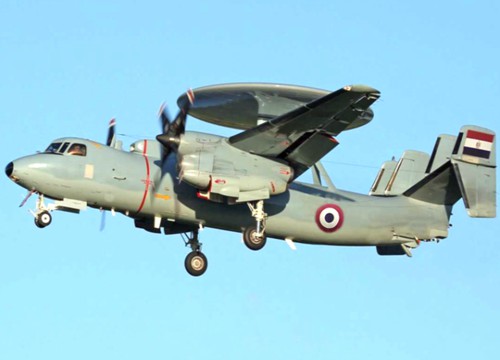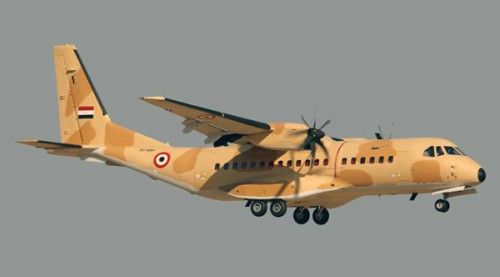On 14 October 1973, the Israeli air force launched an offensive against Egypt’s airports in the Delta with the purpose of sapping Egypt’s aerial strength and preventing its planes from striking Israeli forces.
Egyptian planes, taking off from the Mansoura and Anshas airbases, intercepted the attack.
The skirmishes, in which more than 150 aircraft from both sides took part, lasted more than 50 minutes, making what would be called the Battle of Mansoura the longest aerial battle in modern history.
Despite the numerical and qualitative superiority of the enemy, Egypt downed 18 Israeli planes.
The remainder turned tail and fled, a scenario that would recur during the rest of the war.
The crucial aerial victory is why 14 October was named Armed Forces Day. To mark the occasion, Al-Ahram Weekly interviewed Air Marshal Mohamed Abbas Helmi, commander of the Egyptian Air Force, who spoke of the role of the Egyptian Air Force in the 1973 War, and its role today.
A preliminary air strike paved the way for the crossing of the Suez Canal in the October 1973 War. How was it executed, and how extensive were the preparations?
Preparations for the October War began immediately after the end of the 1967 War. The Air Force had learned lessons and began to equip itself for the next war conflict.
The first step was to rebuild a combat force of aircraft and pilots. The air force was restructured into separate brigades. An aerial reconnaissance brigade was created and equipped with modern surveillance and tracking equipment.
Although the number of pilots at the end of the 1967 War exceeded the number of aircraft, the reconstruction phase required yet more pilots and enrolment in the air force academy was increased. It was also necessary to prepare the theatre of operations.
The Air Force constructed new airbases and fortified operation rooms at every airport and airbase. It increased the numbers of runways and built fortified bunkers to house the aircraft and for maintenance purposes.
The Air Force played an important role in the War of Attrition which helped prepare it for the October War. On 10 December 1969 Egyptian pilots had their first confrontation with the Phantom, the most modern aircraft in the American arsenal.
An aerial battle took place at 11am over Ain Sokhna in the Gulf of Suez. Eight phantoms attacked the area to strike an Egyptian radar station. They were intercepted by eight Egyptian MIG-21s. An Egyptian pilot downed the first Phantom in Ras Al-Masallah on the eastern shore of the Gulf of Suez.
What was on the role of the Air Force during the 1973 War?
The Air Force was at the vanguard of the combat action. A preliminary air strike threw the enemy off balance at the outset of the war.
More than 200 aircraft took part in the main offensive which targeted Israeli installations in Sinai. The operation was conducted in total radio silence to avoid being picked up by enemy monitoring devices.
To avoid detection, aerial formations flew at very low altitudes and along carefully chosen flight paths. The passage of our aircraft over the heads of our ground forces played a huge part in raising the morale of the troops on the ground.
Our planes crossed the Suez Canal in a single sortie and struck the Israelis’ main command centre at Um Marjam in order to sever the enemy’s communications.
They continued to strike pre-identified targets, knocking out three main runways in three airfields — Al-Maliz, Beir Tamada and Ras Nasrani — as well as three subsidiary runways in the same air bases.
They took out 10 HAWK air defence batteries, two artillery installations, and numerous administrative sits. The operation lasted for about 30 minutes. Since more than 90 per cent of targets were hit successfully a planned second sortie was cancelled.

E-2C Hawkeye
How do you rate the skills of Egyptian pilots today?
Egyptian pilots grasped the technological innovations of the latest aircraft, the Rafale and the F-16 block 52, in record time.
The same applies to technical crews. The latest pedagogical techniques, equipment and facilities are used to train and equip pilots and technical crews to the standard required by the Air Force.
During the October 1973 War the Egyptian pilot proved his resilience and efficacy in combat and it is a source of pride that today’s pilots carry on that tradition.
The current generation has proven its skills on every occasion in the Air Force has been called into play, in the Martyr’s Right Operation in Sinai, Comprehensive Operation Sinai (COS) 2018, missions to safeguard borders and deter terrorist infiltration, joint drills and manoeuvres with allies and participation in combat operations with Saudi Arabia such as the Revival of Hope Operation.

CASA C-295M
To what extent does the Egyptian Air Force cooperate with the air forces of friendly nations in training and the transfer of expertise?
Our Air Force has always been held in high esteem by our allies, witness the desire of so many nations to participate in joint exercises that involve the transfer of expertise and combat skills.
Among the many joint manoeuvres with Arab states are the Yarmouk 3 aerial exercises with Kuwait, the Hamad 2 joint aerial/naval exercises and the Khaled Ibn Al-Walid joint drills with Bahrain, the Faisal 2 and Gulf Shield 1 joint aerial training exercises with Saudi Arabia, the Aqaba 3 joint exercises with Jordan and the Khalifa 3 joint naval drills and the Zayed 2 joint air/naval drills with the UAE.
We also hold joint exercises with allies outside the Arab region, the Eagle Salute and the Bright Star series of exercises with the US, the Cleopatra series of joint naval exercises with France, the Medusa series of joint naval exercises with Greece and, more recently Cyprus, and the Protectors of Friendship series of joint paratroop manoeuvres with Russia. In all these joint drills we benefit from the exchange of expertise.
The Air Force is equipped with different hardware systems. How does it deal with the diversity?
Diversity in weaponry is an advantage. For one thing it means we are not dependent on a single supply source.
The Air Force designs training programmes for specific weapon systems. Integrating them involves staging joint exercises to enhance interoperability.
Teams are also rotated so they become familiar with the different systems and the particular advantages of each.

F-16 Fighter Jet
How have regional transformations, and changes in the threats facing Egypt, affected the Air Force?
Regional instability and the penetration of terrorist organisations into some countries have imposed a new reality which demands constant, around-the-clock vigilance.
The Air Force, with its comprehensive weapon systems, undertakes assignments in coordination with the Armed Forces’ general command and set by the political leadership.
Air Force units have collaborated in raids against terrorist lairs in all parts of the country. They undertake reconnaissance sorties, surveillance activities and other necessary operations to secure Egypt’s borders in all directions and intercept infiltrators.
The war against terrorism has placed new tasks on the shoulders of the Air Force. What expertise has the Armed Forces acquired during this ongoing battle?
Irregular warfare has proliferated, pitting small groups of non-state actors against standing state armies. Our pilots have acquired new skills and combat methodologies while carrying out the additional tasks which have been assigned to the Air Force, not least intercepting arms and drug smugglers.
Because of the internal security situation in the country the Air Force has also had to undertake such tasks as transporting funds and even student exams to the provinces given the difficulties of safeguarding land routes.
The Air Force’s flying ambulances have also transported people from all parts of the country to hospitals to enable them to receive emergency treatment.
Air Force personnel are trained to undertake these extra duties without neglecting combat readiness and combat efficacy. When performing irregular tasks assigned to it the Air Force never suspends training for operations. It works unceasingly to protect Egypt’s skies.
* A version of this article appears in print in the 18 October, 2018 edition of Al-Ahram Weekly under the headline: Protection from above
Short link: